No products in the cart.
Did you know there is one essential herb to grow in the garden that makes for a beautiful shrub? The Tuscan Blue Rosemary plants fit well in a herb garden to the front of your backyard.
The best part is bringing fragrance to a beautiful sight to create a Mediterranean garden. So, reserve a spot in your landscape with this incredible plant to savor the aroma and sight of the beautiful light blue flowers, making you feel like you are on vacation.
Plant Name: Rosmarinus officinalis ‘Tuscan Blue’
Other Name: Tuscan Blue Rosemary
Plant Type: Evergreen
Native Areas: Italy and the Mediterranean Region
Light Requirement: Full Sun
Watering: Moderate
Fertilizer: Fertilize lightly in spring
Toxicity: Non-toxic
Temperature: Hardy down to 10°F
Propagation: Stem Cuttings
Mature Height: 6 feet tall and 4 feet wide
Soil Type: Slightly acidic soil
USDA Zones: 8-11
A Bit of History on Rosemary Plants
Rosemary has long been part of the edible garden for centuries. In ancient times, people believed that the rosemary plant strengthened the mind. Rosemary is rich as an aromatic oil and releases a fragrance when crushed.
It helped to mask body odor, and people used it to ward off evil spirits. The best part of all families used rosemary to season food, mainly to disguise the smell and taste of gamy meat.
Hence, the Tuscan Blue Rosemary, with its dainty spikes and scented blue flowers in early spring to summer, is a must-have in the garden.
The grayish-green foliage looks attractive, and you can use the fragrant needle-like evergreen foliage for an ornamental display. The rosemary plants grow in a natural rustic form to display in a herb garden to a flower garden.
Hence, it makes for an ideal foundation plant, container plant, or culinary herb displayed in outdoor pots or grown as a plant indoors. The evergreen grows with woody stems in an upright hedge form to spread while it grows.
The best part is that it is ideal for the inner city environments, and deer are not fond of it if you live near a forest. You can also grow them with other landscape plants for year-round interest in the garden.
Tuscan Blue Rosemary Care Guide

When you plant Tuscan Blue Rosemary, it grows moderately once established in mass planting or grown outdoors in containers. With the low canopy, you can plant them in the city under power lines as it can handle urban pollution.
The pretty shrub can take a few years after planting to mature. So, depending on how you plan to grow your rosemary, provide them with enough space in between to spread out. Compared to other herbs, it grows slowly with an upright habit and can be grown in outdoor containers.
When growing rosemary indoors, this woody herb, with its upright form, will grow as smaller plants than those in your herb garden. So, now that you know a bit more about this popular herb, let’s look at its individual needs.
The Best Soil Type For Growing Tuscan Blue Rosemary
Growing Tuscan Blue Rosemary, the soil type you use is of importance. Whether grown as landscape plants or in containers, drainage is essential. Furthermore, the soil must aerate well.
What you add to help get well-drained soil depends on your potting medium. It needs very well-drained soil to prevent root rot. While blue rosemary survives in most soils, like sandy soils, it enjoys having more alkaline than acidic soil.
It does well in clay soils, but amending it with some sand helps. Lastly, it also loves loamy soil. Most importantly, choose the right pot size with enough drainage holes to prevent standing water for potted plants.
Full Sunlight Best For Blue Rosemary Plant
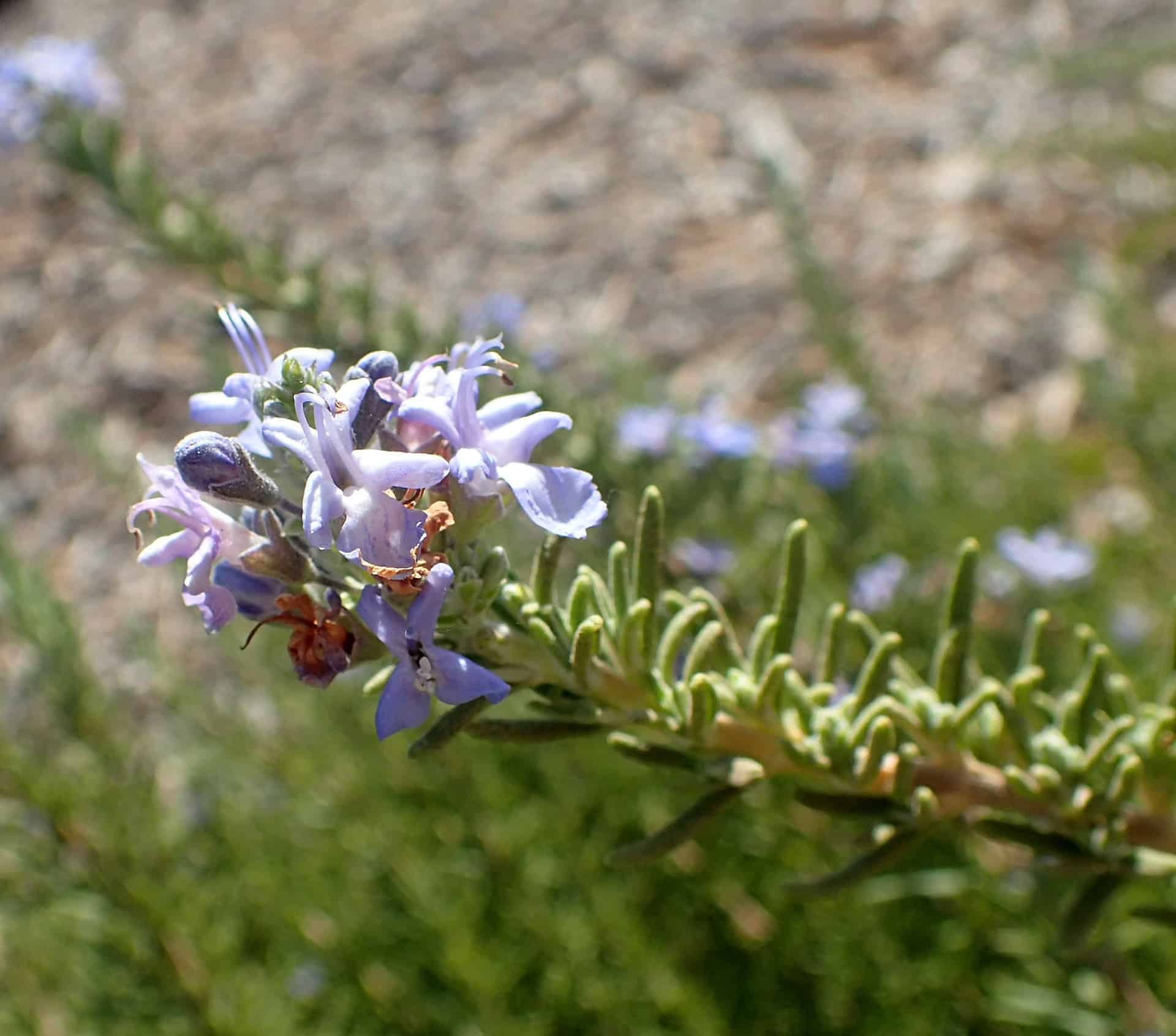
The prevalent herb thrives in full sun and can handle some bright morning shade, but by midday, your woody herb will look its best with afternoon sun.
When growing plants like rosemary and the light levels are too low, they will not grow.
It thrives in warm temperatures and can handle the full sun in the USDA zone with the hottest temperatures.
Watering Your Woody Herb
Young outdoor plants will need regular watering when standing in exposed locations, depending on the temperatures. Still, once your plant grows and the root zone is established, it can thrive on average moisture levels.
You may find in colder microclimates, you can water less, while it will need more frequent watering in hot regions. When growing plants, the rule is not to overwater as it can lead to the rotting of the roots.
Another helpful thing is to use thick mulch around the root zone to help retain water.
Temperature and Humidity
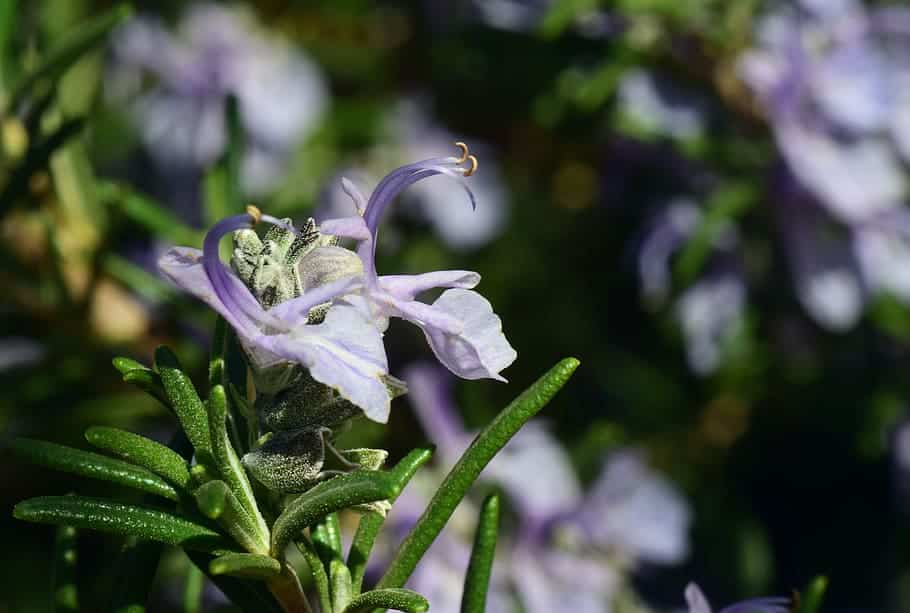
No other landscape plants are as versatile as rosemary regarding these two points. Still, your Tuscan Blue Rosemary needs a lot of air circulation. The fact is that rosemary grows equally well in different USDA zones.
The main concern is that these plants can get mildew fast, mostly when grown in containers and close to walls. So air circulation is essential. Occasionally, the woody herb does not mind a misting, but the key is air circulation.
In a freezing growing zone, rosemary cannot tolerate temperatures that dip down more than 10°F. Yet, you can find some colder and hardier varieties, like the Arp and Madeline Hill.
So, if you live in a zone where it gets cold, it is best to grow your woody herb in a pot and brought indoors when temperatures drop.
Fertilizing Tuscan Blue Rosemary
Rosemary thrives in a dry location as it prefers dry soil to soggy soil. Hence, it does not need much feeding. You can feed an all-purpose fertilizer every two to three years in late winter. Still, if your rosemary looks a bit pale during the growing season in early spring, feed it once with an all-purpose fertilizer.

Pruning Your Tuscan Blue Rosemary
For newly planted rosemary, you need not prune for a few years. Then, you can give your plant a good pruning every spring after it completes those pretty blue flowers and dies off.
When your rosemary reaches a mature height, you may need to remove whole branches using a saw to shape and allow for enough air circulation. In addition, you can remove some crossing branches when they grow too dense.
You can do light pruning during the year, but it depends on the size, and you may only need a trim when harvesting the tips.
Potting Tuscan Blue Rosemary
The Tuscan Blue Rosemary care tips are the same as growing them in the ground. Always choose a container size considering the mature height. You can start small and work your way up with repotting.
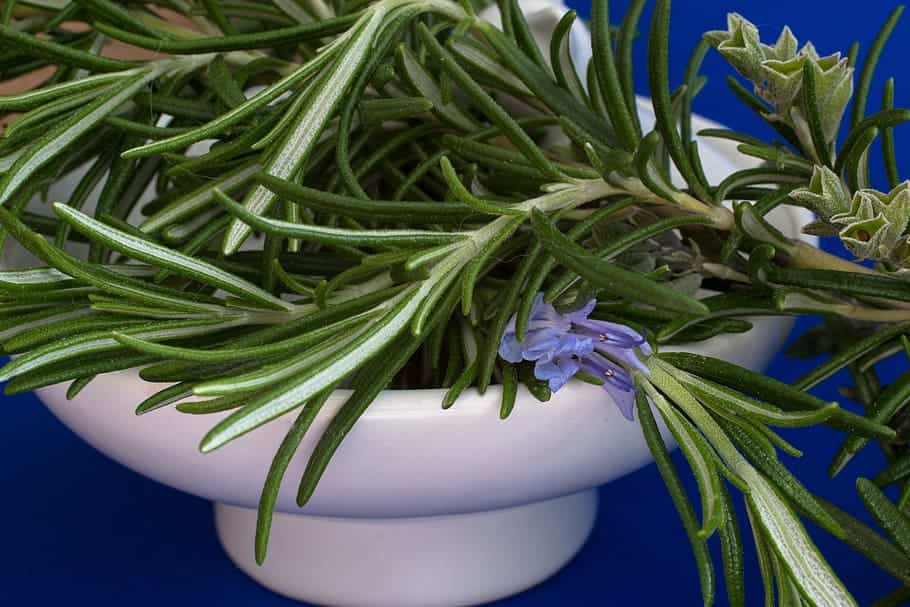
Your plant will do fine in a ceramic, plastic, clay pot, and even terra cotta alongside your other herbs. Use a well-draining mix of 1/2 succulent/cactus mix and 1/2 potting soil.
You can expect to water more as well. Then, provide your rosemary with enough bright light, allowing the soil to dry between watering.
Then, take your plants outside during the warmer months to get some sun and heat.
Propagating Tuscan Blue Rosemary
The rosemary can multiply and is well suited for propagation using cuttings from the stem in water.
Take softwood cuttings about 8 inches long.
Strip off the lower leaves and place the stem in a jar of water.
Ensure that at least two to three nodes are below the water line.
Once root growth appears, you can transplant them into a soil mix.
Tuscan Blue Rosemary Similar Plants
The Tuscan Blue Rosemary is a favorite to grow in the garden for ornamental and culinary purposes. But there are some other varieties to grow as well.
Roman Beauty

The plant has arching stems and blooms lavender-blue flowers in spring with aromatic evergreen needle–like foliage value for culinary use.
Barbeque Rosemary
 Barbeque Rosemary @flickr
Barbeque Rosemary @flickr
The woody herb has a remarkable flavor for cooking. It grows straight stems to make barbeque skewers and grows fast with blue flowers.
Golden Rosemary

The plant is exceptional, with yellow foliage in spring to late fall, and the leaf colors vary throughout the year.
Blue Spires
The aroma is out of this world with the grey–green foliage when covered with blue flowers. It needs little care once it becomes established.
Spice Island

The herb has an excellent flavor for seasoning food, whether fresh or dried.
Arp Rosemary
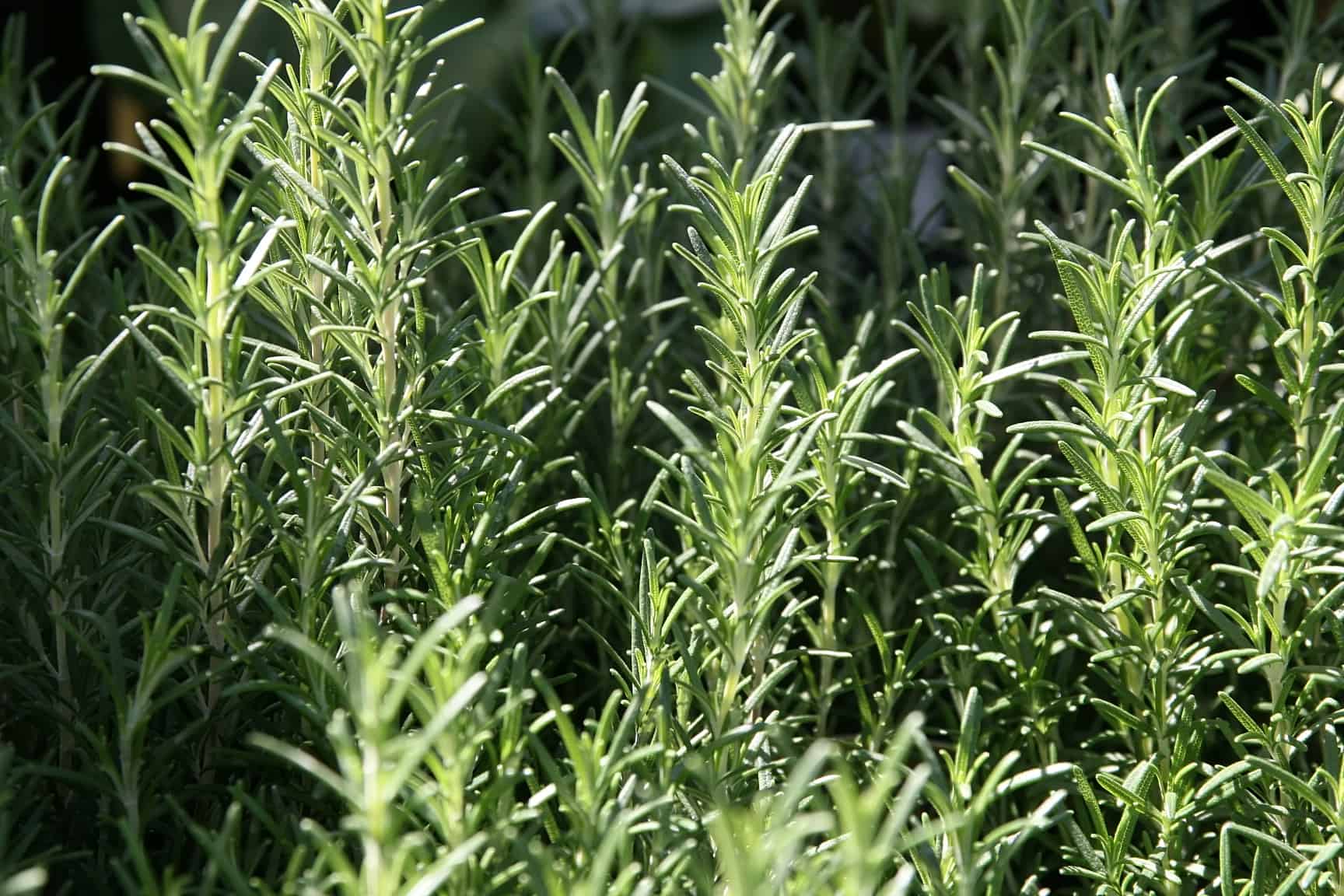
It is a cold-hardy plant with a typical rosemary flavor to use in your recipes.
Huntington Carpet
 Huntington Carpet rosemary @flckr
Huntington Carpet rosemary @flckr
The herb blooms deep blue flowers and looks fabulous as ground cover with aromatic leaves to use in food.
Pink Rosemary
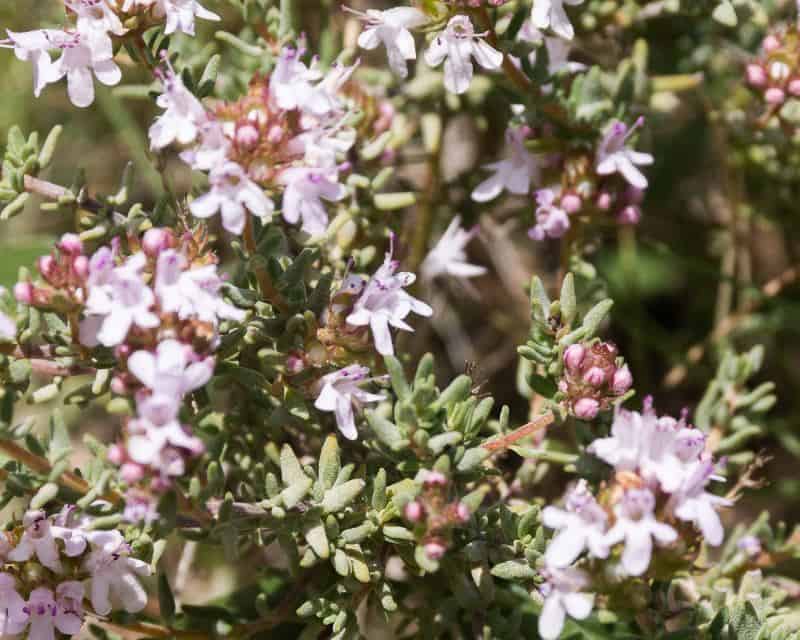
The plant has a weeping form with small leaves and palish pink flowers covering the plant in winter.
Tuscan Blue Rosemary Common Diseases and Pests
You may find your rosemary plant does not get any pests but might see occasional spittle bugs you can hose off. In contrast, it can be susceptible to mealybugs, scale, and spider mites. Your Tuscan Blue Rosemary can get fungal disease or mildew due to high humidity and temperatures.
Frequently Asked Questions
You can find different rosemary to grow with upright growth, trailing, to ground cover. The best woody herb for culinary purposes is the Tuscan Spires and Tuscan Blue Rosemary. Furthermore, both make for exceptional ornamental displays in the garden.
In the first few years, the Tuscan Blue grows very slowly, but once it becomes established, it will start to spread and bush out.
Tuscan Blue Rosemary is not too difficult to maintain, makes a fabulous rosemary hedge privacy screen, and works well in a water-wise garden. You can harvest fresh leaves for cooking as well. Another highlight is the bees love the flowers.
You can find the Tuscan Blue sold at your local nursery, but you need not look far, as Plantly has a wide selection of rosemary herb garden plants to browse through.
Whether you want to buy, sell, or simply reach out to other plant enthusiasts, Plantly is the right place to be!


